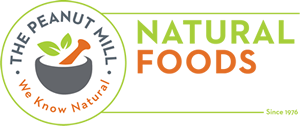
by Cassie Irwin, ND
To detox or not to detox? There’s quite some debate in the scientific and medical communities about whether or not we need to assist the body’s natural detoxification process.
While it’s certainly true that the body is built to eliminate toxins via its organs of detoxification, we also need to acknowledge that certain medications, pesticides on our food, endocrine disrupting chemicals in plastics, heavy metals in the air, and genetic detoxification insufficiencies put extra burden on the detoxification system.
Detoxification Pathways of the Body
Detoxification support protocols usually focus on the liver, but this is just one of the many organs involved in detoxification. Let’s break down five important detoxification pathways so you can learn how to help your body work for you.
1) Intestines
Signs of Impaired Digestive Function:
- Nausea
- Bloating
- Constipation
- Undigested food in the stool
- Abdominal pain
- Malodorous gas
- Mucus in the stool
The most important thing to remember with digestive function is frequency and quality of bowel movements. Having a well-formed bowel movement after every meal is an indicator of excellent digestion and elimination. One bowel movement per day despite having three meals speaks to insufficient elimination and therefore a buildup of toxins which sit in the gut and can cause damage to the gut lining.
Stool sitting in the gut for longer than it should can contribute to overgrowth of bacteria. This, in turn, can contribute to estrogen dominance and associated conditions (heavy periods, fibroids), IBS, SIBO, rheumatoid arthritis and autoimmune conditions.
To promote healthy bowel movements, ensure you’re eating 14 grams of fibre for every 1000 calories you eat in a day. Eat lots of roughage in the form of leafy greens, as well as cooked vegetables, beans, and legumes. Speak to a healthcare provider before starting probiotics, because in certain cases they can aggravate IBS.
2. Liver
Signs Your Liver May Be Sluggish:
-
- Nausea
- Bloating
- Constipation
- Hormone problems and irregular periods
- Estrogen dominance
- Yellowish skin
- Headaches
The first step in supporting liver detoxification is to get your bowels moving (see Digestion, above). To help with both phases of liver detoxification, focus on eating plenty of leafy greens like kale and spinach; cruciferous vegetables, including broccoli, cauliflower, cabbage, brussels sprout; bitter greens like dandelion leaves and artichoke; and sulfur-rich vegetables like onion and garlic.
Both phases of liver detoxification require certain nutrients derived from the above foods, and it may be beneficial to give your body a bit of a supplement boost, particularly if your digestive function is impaired by poor absorption (think celiac disease, IBS). Consider supplementing with a B vitamin complex, N-acetyl-cysteine, and milk thistle to give your liver some love.
Reduce toxic exposure by replacing all your body care and cleaning products with organic, toxin-free options.
3. Kidneys
Signs Your Kidneys May Be Under-functioning:
-
- Swelling in the feet, face, hands, or around the eyes
- Puffiness around the eyes
- Changes to urine volume
- Changes to urine colour
- Foamy urine
- Blood in the urine
The kidneys are responsible for excreting liquid, water-soluble toxins via the urine. Give your kidneys some help by drinking enough water throughout your day. In Traditional Chinese Medicine, a good indicator of sufficient water intake is urine that is the colour of pale hay. Be forewarned that if you’re taking B vitamins, this makes urine a bright yellow colour. Encourage urination with herbal teas like marshmallow, parsley, oatstraw, nettles and dandelion leaf.
Speak to your healthcare provider about testing your kidney function via blood and/or urine tests, and seek appropriate medical care if you have or suspect you may have kidney disease.
4. LUNGS
The lungs help exhale toxins that are inhaled and trapped by mucous. One of the best ways to support lung detoxification is to commit to regular cardiorespiratory exercise. Following the same logic, it may be beneficial to engage in a deep breathing practice to encourage deep exhalation and calm your stress and anxiety while you’re at it.
Of course, if you smoke cigarettes, it would be helpful to seek support for smoking cessation to allow your lungs to take a breather. Consult an alternative healthcare provider to inquire about adjunctive cessation therapies involving acupuncture and herbal medicines.
5) Lymphatics
The lymphatic system is the most forgotten body system when it comes to detox protocols. This system performs the crucial role of trapping toxins in the lymph and bringing them to the liver, digestive system and kidneys so they can be eliminated. But unlike the cardiovascular system which has a pump (the heart), the lymphatic system doesn’t and therefore can get a little sluggish as a result. The only way lymph can circulate is via muscle pumping, i.e. by movement engaging the muscle. Since many of us spend our days sitting down, our toxin-containing lymph sits down with us.
The solution here is to spend more hours of your day moving. Even gentle exercise like walking is beneficial for lymphatic circulation. Incorporate gentle dry skin brushing into your pre-shower routine, using light pressure moving from the extremities to the core of your body. In the shower, alternate with hot and cold water in a 3:1 ratio. Contraction and relaxation of your lymphatic vessels encourages circulation of lymph through the body.

Dr. Cassie Irwin, ND
Naturopathic Contributor, The Peanut Mill Natural Foods Market
